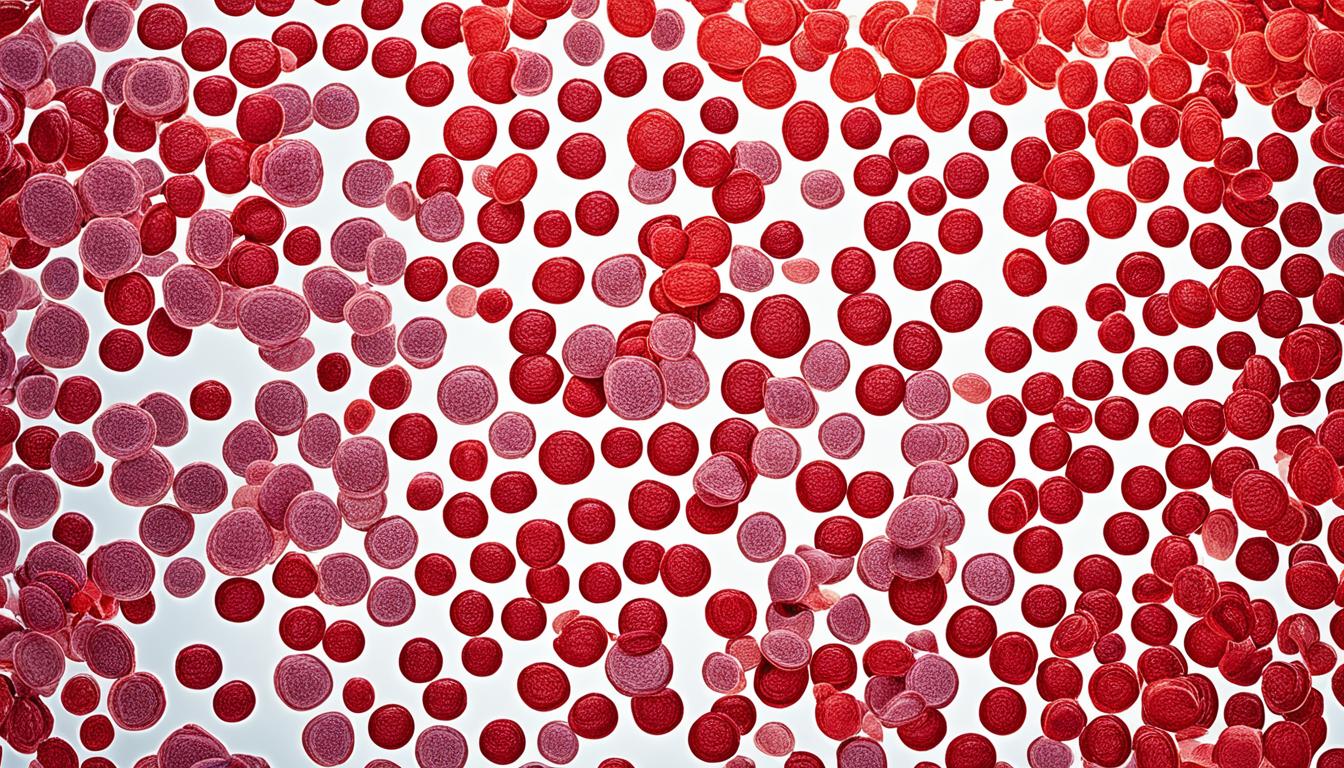Polycythemia vera (PV) is a rare blood cancer affecting the bone marrow. It makes too many red blood cells. The blood thickens, raising the risk of blood clots.
It’s a slow-developing disease that may not show symptoms for years. Many find out they have it during routine blood tests.
Key Takeaways:
- Polycythemia vera is a rare blood cancer characterized by excessive production of red blood cells in the bone marrow.
- Thickened blood due to high red blood cell count can lead to complications like blood clots.
- PV is often diagnosed during routine blood tests as it may present with mild or asymptomatic symptoms.
- The exact cause of PV is unknown, but it is associated with a mutation in the JAK2 gene.
- Treatment options for PV include medication, phlebotomy (blood removal), and stem cell therapy in some cases.
If you think you might have polycythemia vera, it’s important to see a doctor. Only they can give you the right diagnosis and treatment.
Being aware and taking care of your health can help avoid serious problems related to this disease.
Causes and Risk Factors of Polycythemia Vera
Polycythemia vera or PV is a rare blood disorder. It’s linked to a gene called Janus kinase 2 (JAK2). This gene can have a mutation that causes too many blood cells to form in the bone marrow.
This mutation, known as JAK2 mutation, is found in about 95% of PV cases. It’s important to note that this mutation isn’t something you’re born with. It develops in your bone marrow cells over time.
The JAK2 mutation isn’t the only cause of polycythemia vera. Other things, like how old you are and whether you’re a man or a woman, might also affect the risk.
Polycythemia vera mostly affects older adults, usually over 60. Yet, it can also happen in younger people, though not as often.
Research shows that men might be at a slightly higher risk of getting PV than women. But, why this happens is still not fully understood.
Recognizing the Risk Factors
Knowing about PV’s causes and risk factors is key to catching it early. Doctors look at these things to see if someone might get PV. By finding PV early, treatments can be started to avoid problems and help the patient do better.
Complications and Treatment Options for Polycythemia Vera
Polycythemia vera is a rare type of blood cancer that brings on some serious issues. It can up the chances of getting blood clots. These clots might lead to big health problems if not taken care of right away.
It can also make your spleen bigger, which can cause pain and other issues. Having too many red blood cells can lead to problems like peptic ulcers and gout. These diseases can really slow you down and need medical help to get better.
In some cases, polycythemia vera can change into other blood diseases or even into leukemia. This shows why getting diagnosed early and getting the right treatment is so important.
If you’ve been diagnosed, it’s critical to team up with your doctor. They can help you keep the disease under control and lower the risks. Treatments aim to cut back on how many red blood cells you have. This might include taking out blood to make the count go down or using drugs like hydroxyurea or interferon alpha.
For some, stem cell therapy might be a good option. It means getting new stem cells to replace the sick ones in your bone marrow. It can be a way to possibly cure polycythemia vera. But, not everyone can try this. Talk to a doctor who’s an expert to decide what’s best for you. Remember, treatment plans are made just for you and your specific situation.

